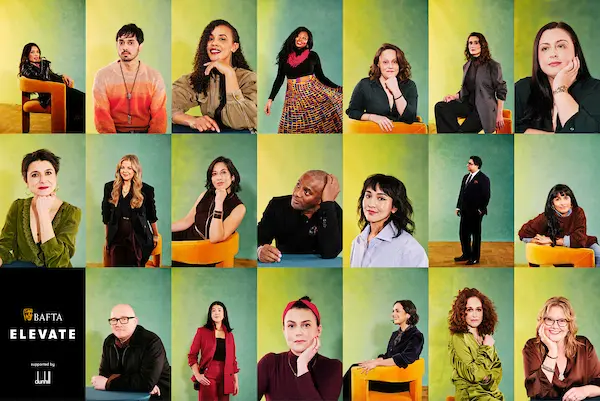
Celebrating 15 years of BAFTA Young Game Designers
Celebrating 15 years of BAFTA Young Game Designers
Telling the climate refugee story with integrity, empathy and impact
The 2025 BAFTA Television Awards with P&O Cruises: Portraits
Celebrating 15 years of BAFTA Young Game Designers
Telling the climate refugee story with integrity, empathy and impact
How Attenborough’s Ocean shows impactful narratives can drive change
Lived experience’s role in impactful authentic storytelling
Find out about our programmes supporting future talent.
Celebrating 15 years of BAFTA Young Game Designers
2025 Young Game Designers: the winners
Lived experience’s role in impactful authentic storytelling
The powerful role documentaries play
In conversation with… Katie Piper
2025 Young Game Designers: 'Game Concept' Finalists
2025 Young Game Designers: 'Game Making' Finalists
Meet the 2025 Mentees
Alice Rohrwacher: Screenwriters’ Lecture
Marielle Heller: Screenwriters’ Lecture
Alice Birch: Screenwriters’ Lecture
Meet the BAFTA Elevate 2025/2026 cohort
Read our latest awards news and find out more about our Fellows and Special Award recipients.
Read moreKirsty Wark: The Fellowship 2025
In Pictures: The BAFTA Television Awards with
P&O Cruises 2025
Meet 2025's P&O Cruises Memorable Moment
ITV - Mr Bates vs The Post Office: Special Award 2025
In conversation with... Stacey Dooley
In Pictures: The BAFTA TV Craft Awards 2025
Celebrating 15 years of BAFTA Young Game Designers
Telling the climate refugee story with integrity, empathy and impact
How Attenborough’s Ocean shows impactful narratives can drive change
Why we must continue to act to ensure a greener screen industry
Lived experience’s role in impactful authentic storytelling
The importance of representation on screen
The powerful role documentaries play
Focus on… celebrating storytelling in games
The most influential video game of all time
Meet the 2025 Mentees
Meet 2025's EE Rising Star
Meet the BAFTA Elevate 2025/2026 cohort
Explore all our great video content from Acceptance speeches to behind the scenes chats.
How Attenborough’s Ocean shows impactful narratives can drive change
Why we must continue to act to ensure a greener screen industry
The importance of representation on screen
The powerful role documentaries play
Mike Leigh: Screenwriters' Lecture
Chris Sanders: Screenwriters’ Lecture

























